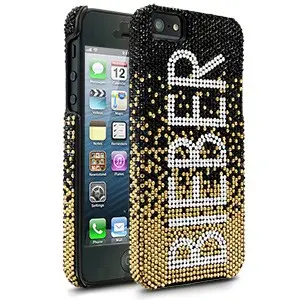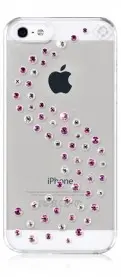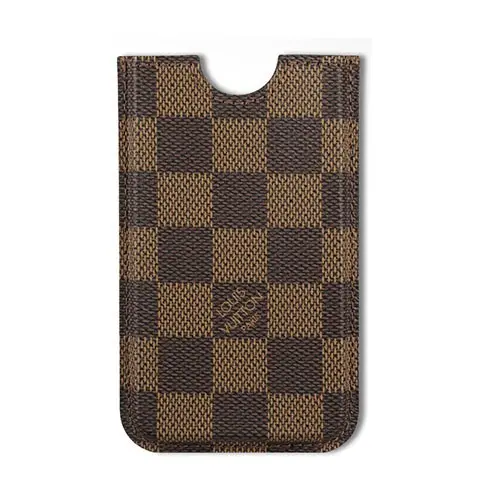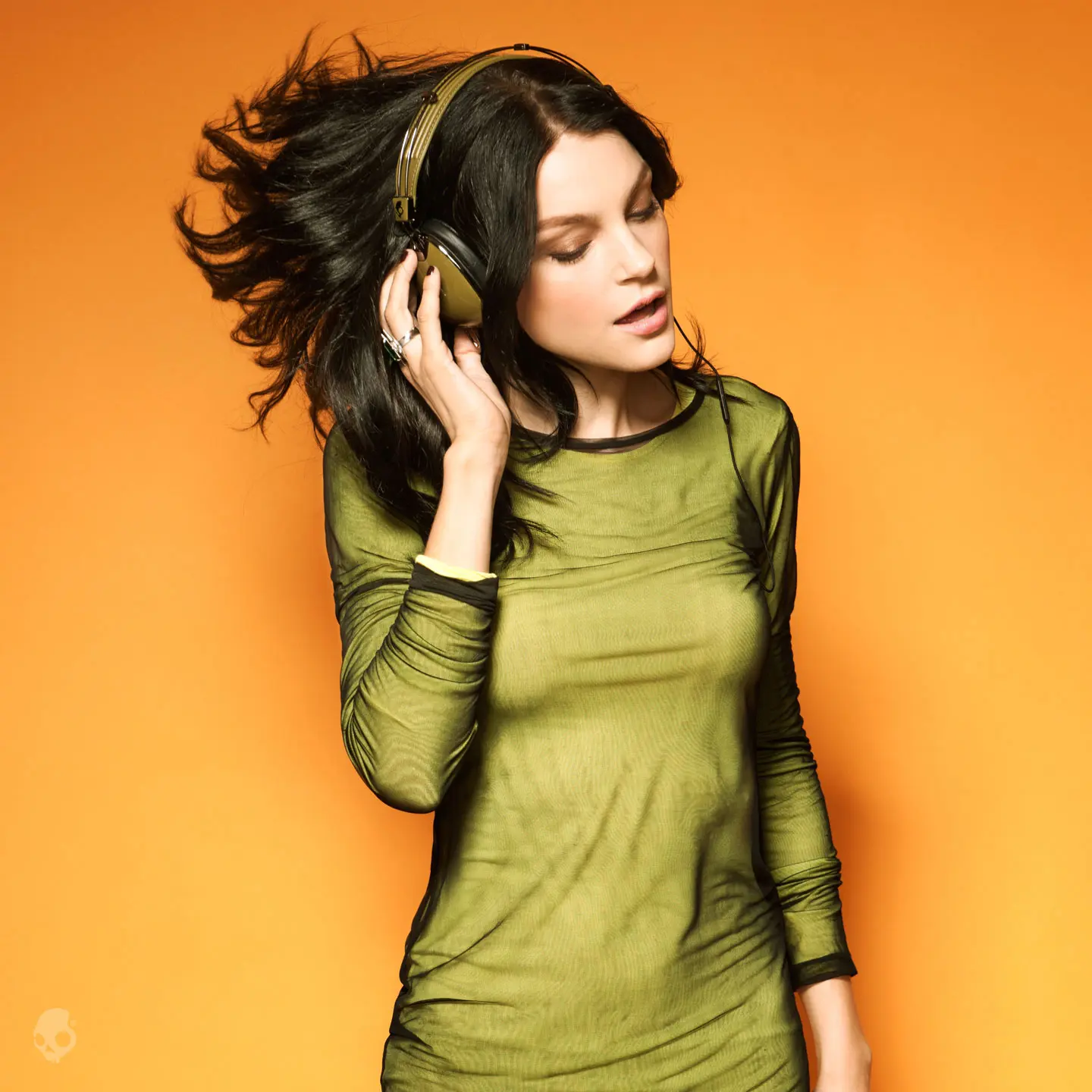Around 1979, Bill Gates pronounced that there should be one “personal computer,” or PC, for every household. But he was thinking more toaster or refrigerator than beloved personal accessory. If he had been, Microsoft might have made a more strategic consumer push, from household to individual.
But of course, in 1979 computers were appliances and cost as much, if not more, than anything else in the home. Today, we have moved from appliances to personal companions. The emperor PC that stood for the symbol of computing for so many years might well be outfitted with a webcam or other USB add-ons, but it probably wasn’t clothed in wood during the day, nor was it adorned with sparkly jewels at night, nor attired in leather when sophistication was required.
When people go out, the PC, like the television and the toaster, stay at home.
No device manufacturer has really embraced this shift, or perhaps even understood it. Our devices have become so intimate that they have gone from functional technology to part of our personal accessory collection. Fashion now infuses the technology market.
As I walked the floor of CES this January, it struck me that, for the most part, I wasn’t spending time looking at marvelous new technological innovations. Why? Because much of the show floor was filled not with computing companies, but with case and accessory manufacturing firms. At the Incipio booth I was provided a catalog that showed their 2013 collections, complete with models and fashion photography. At the Cellairis booth, I was ushered through bejeweled isles of Justin Bieber themed bling-encrusted iPhone cases.

Beiber by Cellairis
Apple sells four main mobile device formats at the moment: the iPhone 5, the iPhone 4, the iPad, and the iPad mini. Those products were represented by hundreds, if not thousands, of cases, stands, button covers, skins, and other items to decorate and embellish those devices. At Apple launch events, cameras glide over the finely machined edges of a new device with the same love George Lucas showed when exposing every detail of an Imperial Star Destroyer. But unlike a PC or a Star Destroyer, those who acquire these finely wrought examples of technological art, quickly, and for good reason, clothe them.
Of course, the first reason to dress an iPhone is the same reason clothing evolved in the first place: protection from the elements. LifeProof, Otterbox, Incipio, Griffin, G-Force and many other manufacturers sell cases that protect device from rain and dust, pool splashes and accidental encounters with marble, or concrete. Particularly paranoid about water, some cases guarantee phone survival even after full-immersion plunges into toilets or coolers.
But protection is only a small part of the story. Those cases aren’t that fashion forward. They come in black or grey or white; some are pink or purple. Some mix up a few basic colors. As much as the manufacturers may want to make protection cool, the function constrains the form much as it does with seatbelts or prophylactics. The majority of suppliers offer coordinated accessories. Cases that reflect lifestyle preferences, harmonize with clothing, and complement personality. Want to match the color of your eyes, or the color of your kicks? Look at Case Scenario and their PANTONE Universe Collection. Need real crystals to sparkle up a look? Seek out to Deos or Bling My Thing.
Although Bling My Thing started their fashion effort with a simple application of crystal to cases, they have seen the market not only grow, but become more demanding. Ayano Kimura, lead designer for Bling My Thing says “we’ve been working hard to improve the practicality of the case. We’ve spent years working on our industrial adhesive to prolong the longevity of crystals, and our craftsmen are constantly trained to provide only the best work to produce our cases. We’ve always believed in melding form and function. Often the form requirement will push us to innovate on how to make it work our Ubling case is a perfect example of this. It took over a year to perfect the manufacturing process.”

All the case manufacturers weren’t at CES, however. But they were in Las Vegas, probably on the retail promenades of Caesar’s Palace, The Palazzo, and the Wynn. The most expensive of cases migrated from the runways and side meetings of Fashion Week in New York, Paris, and Milan. These manufacturers, which carry names like Chanel, Alexander McQueen, Dior, Prada and Fendi, would rather be called “houses.”

The device cases from major designers certainly reflect current fashion, but they also reflect the house brand, and by association, they enhance the brand of the case’s owner.
Most of these high-end cases cost more than the device they embrace. But unlike the heavy duty device protectors, or even the medium-priced fashion cases from Cellairis, Recover, Tavik, and others, they offer little more than leather pouches. The iPhone’s naked glass and aluminum visage emerges from a Louis Vuitton, a Gucci, a Jimmy Choo, into the elements. Most phones aren’t damaged when tucked neatly away in slipcase and purse, but when removed and inadvertently dropped onto a cool marble floor as one’s arm is jostled.
This lack of concern for the phone is an economic one. The $100 case provides peace of mind for people who see their phone as valuable of property. Expensive designer cases push the edge between valuing technology and turning it into a clearly replaceable commodity.
Latest statements in phones aren’t even cases; they are bracelets. Model and entrepreneur Lily Kwong is releasing interchangeable bracelets that wrap around the edge of an iPhone 5 to bathe it in leather, gold or Swarovski crystal. The combination case and bracelet starts at $449, but the interchangeable bracelets–which were featured in the May 2013 Vogue–are also sold separately. Kwong also sells pony hair iPad clutches with deep red suede or teal lining retailing for between $749 and $799.

This is an area into which the stalwart PC, fixed to its place by power and cable, wire and weight, cannot cross. The PC is no longer personal. The PC has truly become an appliance, and as an appliance, it may benefit from design, but it will not lie next to pillows, or adorn a lap or be shoved nonchalantly into a pocket. Not only does the emperor PC wear no clothing, no one has any interest in crafting it a wardrobe.
I had the opportunity to compare notes with Glamour associate accessories editor Brooke Danielson recently in the New York headquarters of Condé Nast. Her drives and passions shape her work at Glamour, where she covers technology for the magazine, and arranges for tech accessories to complement fashion shoots.
Danielson describes a shoot: “The model is holding an iPhone in every shot. It’s the idea that she’s going out. She’s having this great night out. She’s getting ready. She’s sending selfies to her girlfriend.”
Glamour also incorporates technology into its work pages because, as Danielson observes, “Tech is so relevant to the modern woman. Your iPhone cover is an accessory.” She sees the phone case as “the new accessory,” something that can “changed according to your outfit.” To her, the phone is a very personal device, referring to it as a “third hand, our second brain.”
Danielson sees technology holistically; it isn’t just about phone cases, it’s about headphones, bags, even backup batteries. Companies like longtime battery supplier Lenmar, founded in 1965, now produces beautifully crafted batteries that can easily complement a cocktail dress or a tux and tails. Ferrari licenses it style and logo to Logic3 to create a line of performance inspired headphones. Skullcandy has evolved beyond inexpensive earbuds, selling high end headphones like the Mix Master, Navigator, and Hesh 2. Skullcandy associates its brand with fashion through a campaign that features Kate Upton, Chanel Iman, Jessica Stam, and Chrissy Teigen in stunning dresses, beautiful blouses, skimpy bathing suits, and of course, headphones.

What we do with our devices endears them to us, as does their portability. And, like pets, they give back–albeit in the form of shared tweets and check-ins, discounts, and images of far off friends who don’t seem so far off when connected by a phone. Our phones are also home to Angry Birds, to Wedding Day Make Overs and Modern War. Although this article has taken a decidedly female turn in its examples, men have not been left out. Sports teams and camouflage accessories integrate their interests and pastimes with devices, into their fashion. And when it’s time to go out, men have as many choices of sleek, stylish phone protection as do the ladies.
As PC shipments continue to decline, Gartner analysts noted in January, “we hypothesize that buyers will not replace secondary PCs in the household, instead allowing them to age out and shifting consumption to a tablet.” (Gartner has little to say about fashion.) But the owners off all those devices will need something to set their iPad, iPhone, Galaxy or Nexus off from their neighbors, their colleagues, or the rivals.
The fashionization of technology won’t stop with the phone cases or headphones, and it won’t just be for the rich. “There is a price point for everyone,” Danielson says. “Tech is huge. It’s the new fragrance.”
And that returns us to the “personal” in personal computer, which seems now more oxymoron than relevant descriptor. One reason phones are so personal is because we treat them so intimately, not only in size or the way we carry them everywhere, but what we say when we use them, how we use social media to extend our personal experiences.
When fashion comments on technology, we know the integration is complete. Perhaps even the deconstruction has begun. In November 2012, Pussycat Doll and X-Factor judge Nicole Scherzinger donned a Cute Circuit Swarovski Crystal and LED leaden dress that displayed real-time Twitter feeds at the Everything Everywhere launch party held at Battersea Power Station in London. Rather than clothing her tech, Scherzinger clothed herself in tech. It will be interesting to see how the fashion feedback loop influences the future of phone, tablet and personal device design.
For years various universities, perhaps most notably MIT, have demonstrated “wearable technology.” University research demos may be interesting, but before they see the light of day, most will need a makeover to move beyond their garage grunge and cyberpunk styling.
The future of technology is decidedly fashion forward. As Don Norman suggested in 1999, the computer will become invisible. I’m not sure the technology companies heeded Norman’s human interface advice all that well, but consumers have extricated the personal from the computer and made their devices their own. Over the last 20 years a huge market has emerged to make devices more relatable, more fun, more elegant and ultimately, more personal. Whether at work, at play or at home, function is no longer enough. What your device wears matters.
[Image: Flickr user Andy Rennie | Lily Kwong Photo by Joe Schildhorn | BFAnyc.com]
Recognize your brand’s excellence by applying to this year’s Brands That Matter Awards before the early-rate deadline, May 3.
